LEGACY OF A 400-YEAR COLONIAL FORT, Galle, Sri Lanka, 2019.12.16

Day 12 (1 of 3).
Known as Asia’s largest remaining colonial fortress and an UNESCO World Heritage site, Galle is a popular tourist destination in southwest Sri Lanka. Galle has long been an important trading port of the island since ancient times. Cinnamon was exported from Sri Lanka as early as 1400 BC, and Galle was likely the main port of export. Throughout history, Galle traded with the Greeks, Romans, Persians, Chinese, Arabs, Malays, and Indians. Sri Lanka’s colonial history began when the Portuguese arrived in the 16th century and built a fortified city in Galle. Galle continued to serve as the main port for spices export. In 1640, the Portuguese surrendered to the Dutch East India Company. After the takeover, the Dutch built the fort that we saw today with bastions and a solid granite wall. In 1796, Galle and Sri Lanka changed hands again when the island became a British Crown colony named Ceylon. The 400-year colonial rule came to an end in 1948 when independence was granted to establish Dominion of Ceylon in the Commonwealth. Then 28 years later in 1972, Sri Lanka finally became a republic. From four centuries as a colonial port of export for spices and coffee (then replaced by tea) to a tourist town based on commercialization of its colonial past, Galle’s fortune has always been tied with the outside world.
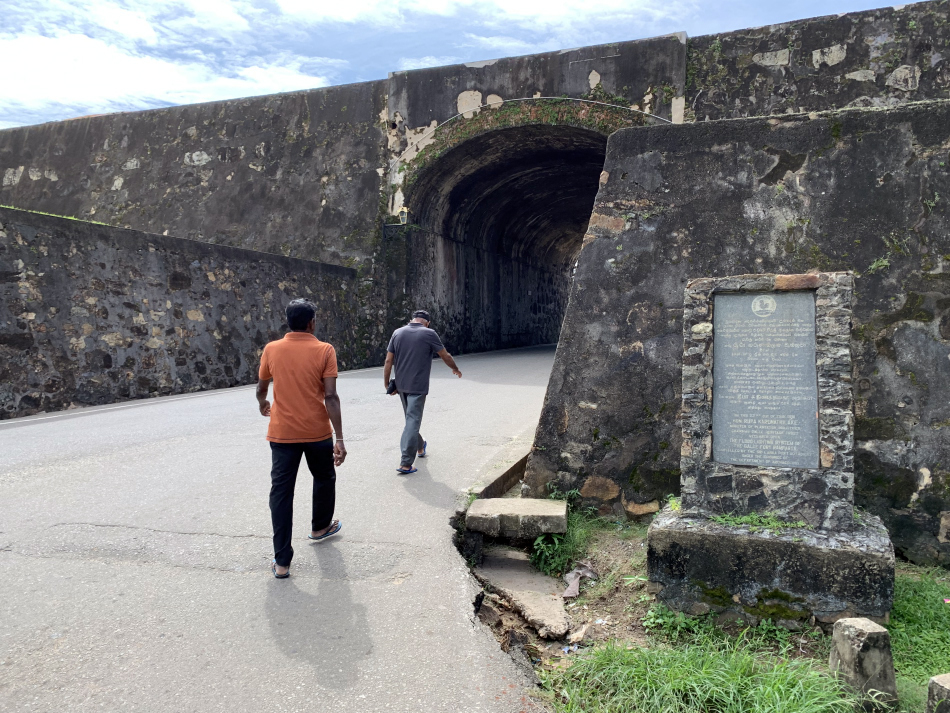 We dropped off our backpacks at the baggage storage in Galle Railway Station, then found our way into the old fortified city.
We dropped off our backpacks at the baggage storage in Galle Railway Station, then found our way into the old fortified city.
 The first thing we saw inside the fortress was Galle Services Club (est. 1947) and the 1883 clock tower.
The first thing we saw inside the fortress was Galle Services Club (est. 1947) and the 1883 clock tower.
 Located on the highest point in the fortress, the Dutch Reformed Church (Groote Kerk) was built by the Dutch in 1755. It was the third Dutch Reformed church in Galle and signified the rise of the Dutch after the Portuguese.
Located on the highest point in the fortress, the Dutch Reformed Church (Groote Kerk) was built by the Dutch in 1755. It was the third Dutch Reformed church in Galle and signified the rise of the Dutch after the Portuguese.
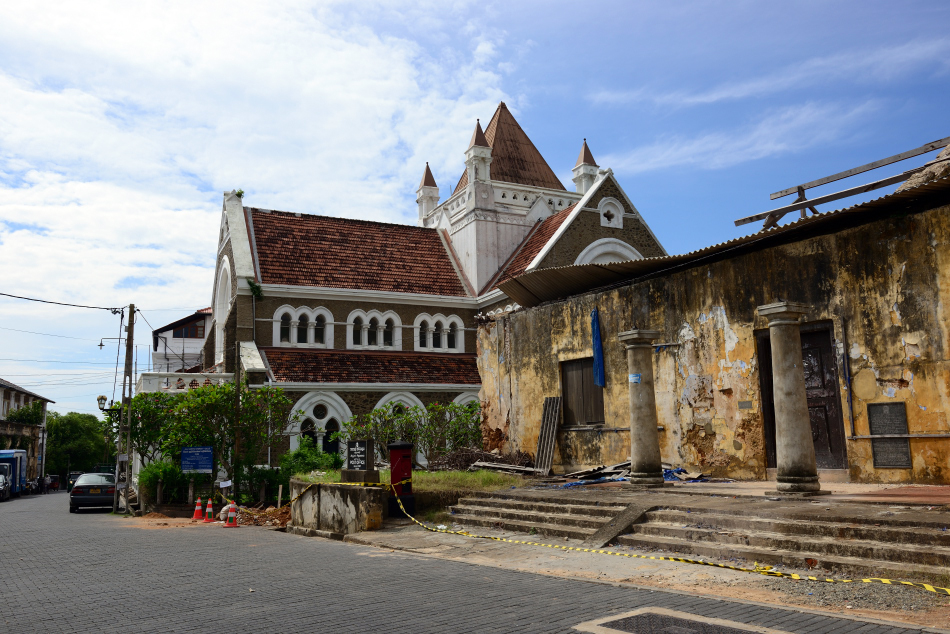 Further down the road from the Dutch Reformed Church stands All Saints’ Church, Galle’s first Anglican Church (consecrated in 1871) and a powerful statement by the British.
Further down the road from the Dutch Reformed Church stands All Saints’ Church, Galle’s first Anglican Church (consecrated in 1871) and a powerful statement by the British.
 The former Dutch warehouse from the 17th century has become the National Maritime Archaeology Museum.
The former Dutch warehouse from the 17th century has become the National Maritime Archaeology Museum.
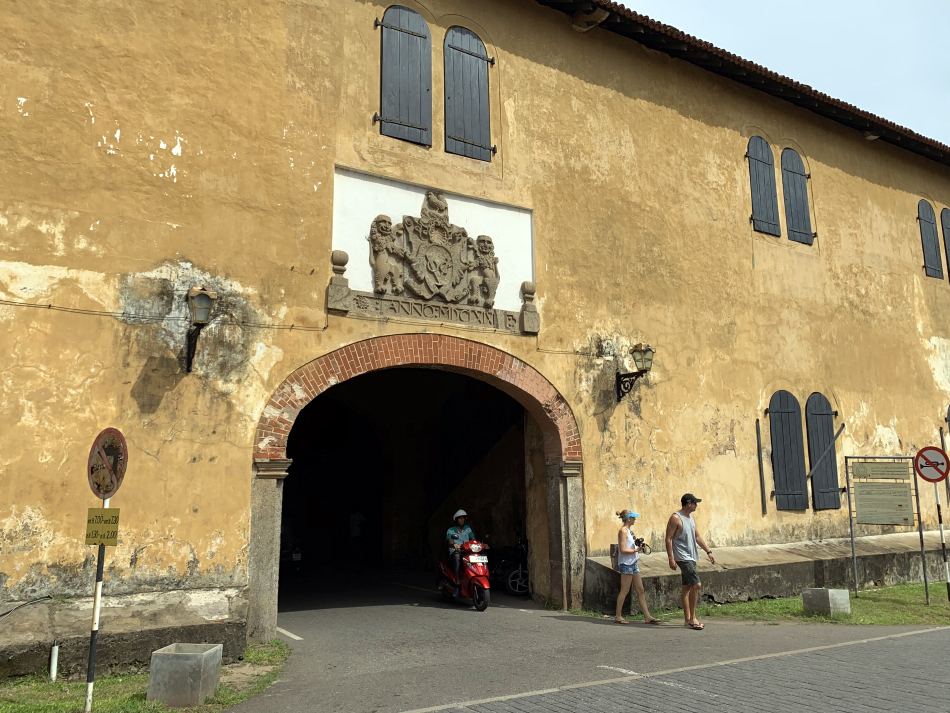 In 1796, the British relocated the emblem of the Dutch East India Company from the outer gate to the inner, and put up the British Royal Emblem at the outer gate.
In 1796, the British relocated the emblem of the Dutch East India Company from the outer gate to the inner, and put up the British Royal Emblem at the outer gate.
 The interior of the old gate is used for motorcycle parking.
The interior of the old gate is used for motorcycle parking.
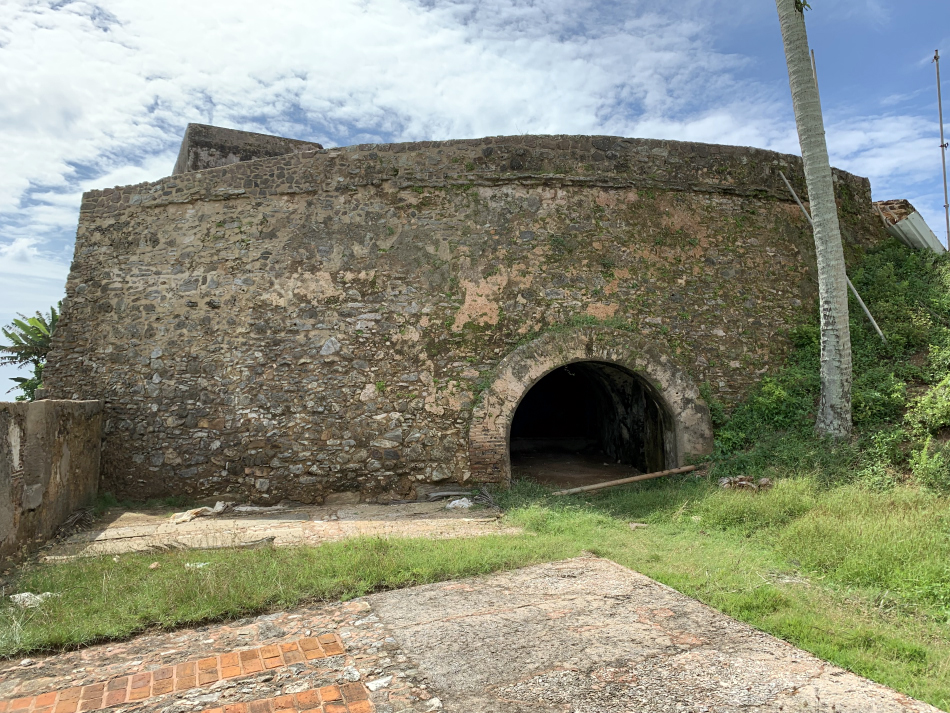 First built by the Portuguese, then renamed to Zwart Fort (Black Fort) by the Dutch. We accessed the Black Fort via a police compound. At Zwart Fort, a staff came out to show us around and told us about the history of the place.
First built by the Portuguese, then renamed to Zwart Fort (Black Fort) by the Dutch. We accessed the Black Fort via a police compound. At Zwart Fort, a staff came out to show us around and told us about the history of the place.
 The Old Dutch Hospital was established by the Dutch to look after the staff of the Dutch East India Company. Then the British extended the building and converted it into a barracks. After independence, the building was used as the town hall. In 2014, the building was once again converted into a shopping and dining complex.
The Old Dutch Hospital was established by the Dutch to look after the staff of the Dutch East India Company. Then the British extended the building and converted it into a barracks. After independence, the building was used as the town hall. In 2014, the building was once again converted into a shopping and dining complex.
 Meeran Jumma Masjid looks more like a church than a mosque, but this Islamic prayer hall has been around for 300 years already. More than half of the population inside the fort are Moor. They are believed to be descendants of the Arab traders who settled in Sri Lanka at around the 9th century.
Meeran Jumma Masjid looks more like a church than a mosque, but this Islamic prayer hall has been around for 300 years already. More than half of the population inside the fort are Moor. They are believed to be descendants of the Arab traders who settled in Sri Lanka at around the 9th century.
 Galle Fort is built on a rock peninsula and there are a few small beaches near the lighthouse.
Galle Fort is built on a rock peninsula and there are a few small beaches near the lighthouse.
 The Galle Lighthouse is the oldest light station in the nation. The original was built by the British in 1848 but was destroyed by fire in 1936. The current 26.5m tall lighthouse was constructed in 1939.
The Galle Lighthouse is the oldest light station in the nation. The original was built by the British in 1848 but was destroyed by fire in 1936. The current 26.5m tall lighthouse was constructed in 1939.
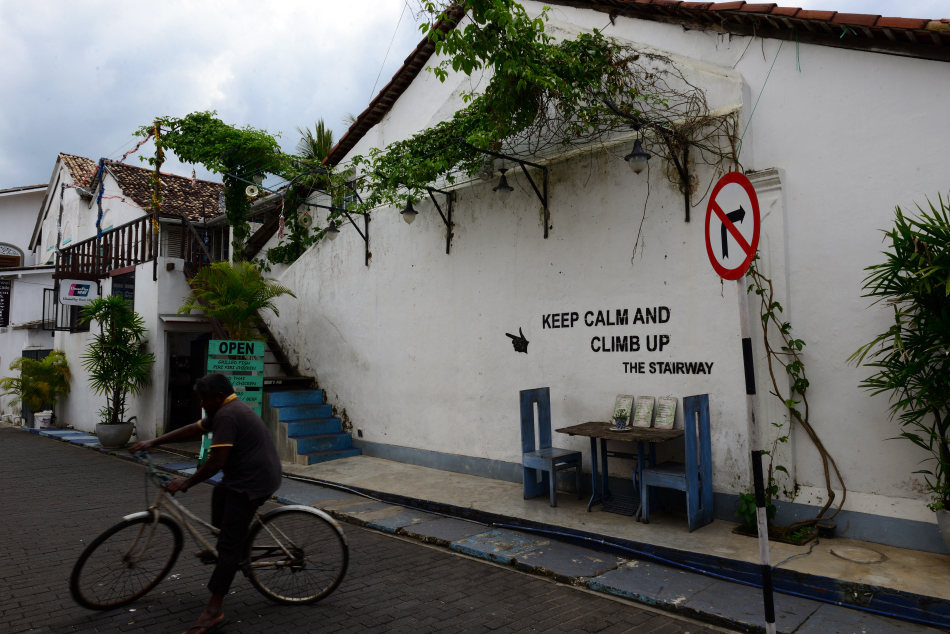 Strolling or cycling aimlessly within Galle Fort is a nice way to explore the town.
Strolling or cycling aimlessly within Galle Fort is a nice way to explore the town.
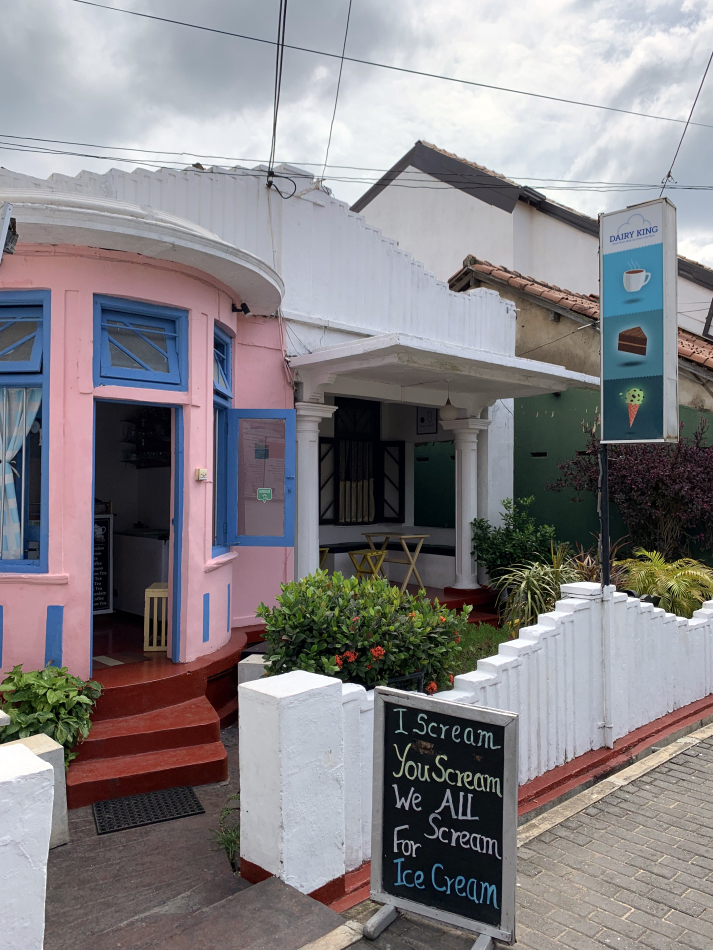 In Galle Fort, Dairy King icecream has been recommended by a number of guidebooks and blogs.
In Galle Fort, Dairy King icecream has been recommended by a number of guidebooks and blogs.
 Dairy King is a great place to take a short break during a visit to Galle Fort.
Dairy King is a great place to take a short break during a visit to Galle Fort.
 Many houses in Galle Fort have been converted into guesthouses, restaurants, or shops catered for tourists.
Many houses in Galle Fort have been converted into guesthouses, restaurants, or shops catered for tourists.
 The ambience of the colonial times is the top selling point for the tourist industry in Galle.
The ambience of the colonial times is the top selling point for the tourist industry in Galle.
 Some old mansions are transformed into high end retail shops for fabrics, furniture, housewares, and other design items with a twist of Sri Lankan style.
Some old mansions are transformed into high end retail shops for fabrics, furniture, housewares, and other design items with a twist of Sri Lankan style.
 Established in 1892, Al Bahajathul Ibraheemiyyah Arabic College is one of the oldest Islamic Arabic institutions in Sri Lanka.
Established in 1892, Al Bahajathul Ibraheemiyyah Arabic College is one of the oldest Islamic Arabic institutions in Sri Lanka.
 On our way out of the fort, we passed by Sri Sudharmalaya Buddhist Temple, a Buddhist temple with a unique appearance. The temple dated back to 1889. The belfry of the building suggests that temple might be converted from an earlier church.
On our way out of the fort, we passed by Sri Sudharmalaya Buddhist Temple, a Buddhist temple with a unique appearance. The temple dated back to 1889. The belfry of the building suggests that temple might be converted from an earlier church.
